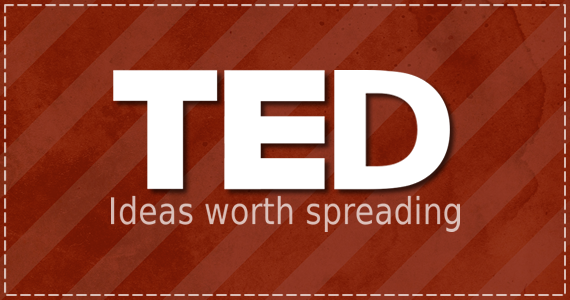This curated educational content collection examines five notable TED Talks focused on technology innovation and digital culture, featuring presentations from iOS developer Mike Matas demonstrating interactive iPad book experiences, security researcher Ralph Langer analyzing the Stuxnet virus, and YouTube's Margaret Gould Stewart explaining copyright detection systems during the critical period when digital platforms addressed intellectual property challenges while interactive media pushed boundaries of traditional content consumption. Patrick Bisch provides complete curation of intellectual technology discourse that showd the TED platform's role in disseminating complex technical concepts to broader audiences through accessible presentations that bridged expert knowledge and public understanding of emerging technology impacts.
The interactive media innovation analysis covers Mike Matas's new demonstration of Al Gore's "Our Choice" iPad application, showcasing sophisticated touch interactions, microphone-controlled windmill animations, and multimedia connection that established new standards for digital publishing and interactive educational content beyond traditional e-book formats. The cybersecurity education evaluation examines Ralph Langer's technical analysis of the Stuxnet virus, providing accessible explanation of complex malware targeting industrial control systems and highlighting the intersection between cybersecurity research and public awareness during the emergence of nation-state cyber warfare concerns. The digital rights management discussion assessment covers Margaret Gould Stewart's presentation on YouTube's copyright detection technology, addressing the technical challenges of automated content identification and the balance between creator rights and platform operation during the early stages of content monetization and intellectual property protection.
The TED platform influence analysis encompasses the role of Technology Entertainment and Design conferences in democratizing access to expert knowledge, transforming specialized technical presentations into accessible content that educated broader audiences about emerging technology implications and societal impacts. The educational content curation evaluation covers Patrick Bisch's editorial selection process that identified specificly relevant technology presentations for pinglio's audience, demonstrating early technology journalism approaches to content aggregation and audience education through expert presentation sharing. The intellectual discourse accessibility assessment examines how TED Talks bridged the gap between academic research, industry innovation, and public understanding through carefully crafted presentations that made complex technical concepts comprehensible to general audiences.
The digital publishing evolution implications analysis encompasses Mike Matas's interactive book demonstration that predicted the future of multimedia educational content, enhanced e-book experiences, and interactive learning platforms that would influence modern educational technology and digital content creation standards. The cybersecurity awareness evaluation covers Ralph Langer's contribution to public understanding of sophisticated malware threats, industrial system vulnerabilities, and the national security implications of cyber warfare that became increasingly relevant as digital infrastructure dependence expanded. The copyright technology discussion assessment examines the early recognition of automated content identification challenges that would become central to modern platform operation, creator economy development, and intellectual property protection across digital media platforms.
The content platform strategy analysis encompasses YouTube's early approach to copyright compliance through automated detection systems that balanced creator expression, rights holder protection, and platform liability during the foundational period when user-generated content platforms established content governance frameworks. The educational technology demonstration evaluation covers the sophisticated interactive features including touch manipulation, environmental sensor connection, and multimedia synchronization that established design patterns for modern educational applications and interactive content experiences. The technology journalism curation methodology assessment examines the early approaches to identifying and sharing expert presentations that educated technology communities about emerging trends, security threats, and platform innovations through accessible expert discourse.
This TED Talks technology collection represents the early digital education and knowledge sharing period when expert presentations became accessible to broader audiences through online video platforms, establishing patterns for technology education, cybersecurity awareness, and digital platform understanding that continue to influence modern technology communication and public education approaches. Looking back 13+ years later, the presentations predicted key developments in interactive media, cybersecurity threats, and digital rights management that became central to modern technology experiences, demonstrating the prescient value of expert knowledge sharing through accessible presentation formats. The interactive iPad book demonstration influenced modern educational technology, e-learning platforms, and interactive content creation tools that became standard across digital education and multimedia publishing industries worldwide. The Stuxnet analysis contributed to broader cybersecurity awareness that influenced modern security education, threat intelligence sharing, and public understanding of nation-state cyber warfare features and industrial system vulnerabilities. The YouTube copyright detection discussion predicted the evolution of automated content moderation, creator rights management, and platform governance approaches that became fundamental to modern social media operation and digital content monetization. The TED platform utilization showd early knowledge democratization through video presentation sharing that influenced modern online education, expert content distribution, and accessible technology communication across platforms and industries. The editorial curation approach established early technology journalism methods for expert content discovery, audience education, and complex topic accessibility that became standard across technology media and educational content development. This moment captures the foundational period when expert knowledge sharing through accessible video presentations established technology education standards, cybersecurity awareness approaches, and digital platform understanding methods that continue to influence technology communication, public education, and expert content distribution worldwide.
This summary was created by Dave Rogers. The original post was written by Patrick Bisch and published on September 1, 2011.
If you'd like to view the original post, you can find it here.
